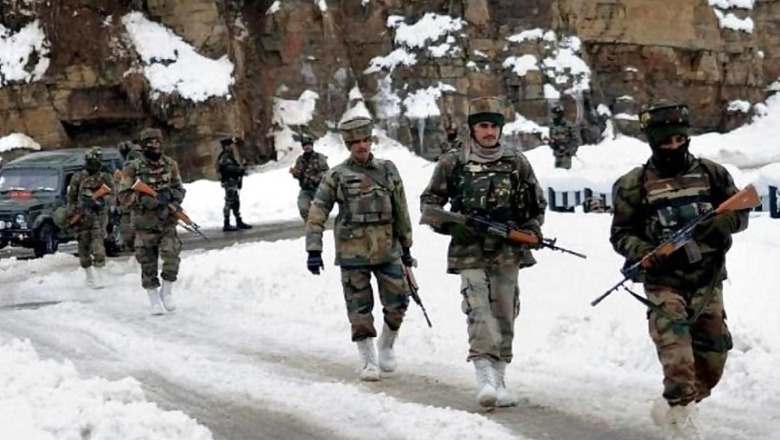
views
The situation in eastern Ladakh, which had almost disappeared from the media channels, was back in the limelight last week. In a swift and proactive move, the Indian Army occupied numerous dominating heights in the Chushul Sector, overlooking the Chinese positions across the Line of Actual Control (LAC).
This has triggered a flurry of military, diplomatic, and political activity, and defence ministers of India and China held a face-to-face meeting in Moscow. Both sides stuck to their respective principled positions of China not losing “an inch of its territory” and India “determined to protect its territorial integrity”. However, there was a consensus to continue with military and diplomatic engagements for the restoration of peace and tranquillity along the LAC.
We have seen a consistent stream of messages from the Indian government that the primary focus for resolving the ongoing crisis is through diplomacy (although the military option is not completely ruled out). Foreign minister S Jaishankar recently stated, “I am totally convinced that the solution to the (LAC) situation has to be found in the domain of the diplomacy, and I say that with responsibility.”
It would be preferable for both countries that the ongoing standoff is de-escalated through talks, but unless there is some progress in the disengagement process, the ground situation could see a sudden deterioration that could derail the diplomatic process. My observation is based on three realities that the two armies face along the LAC.
First, there has been a complete breakdown of agreements and protocols that guided the conduct of soldiers when they came into a face-to-face situation with each other. The use of force and violence was strictly prohibited. In the Chumar face-off in 2014, at least a thousand soldiers on each side were at a distance of a few yards from each other. The concern in the Northern Command Headquarter at that time was that some local dispute between the soldiers on the ground should not spin out of control. Fortunately, peace was held.
Now, after the brutal incident and the loss of lives at Galwan, the procedures and protocols have been revised with free authority to local commanders to take action as they deem fit. These are appropriate orders keeping in view the actions of the People’s Liberation Army (PLA), but they also heighten the chances of a shooting war.
Second, there is a great deal of mistrust on both sides. The Indian Army, after having been surprised in May, will look at all PLA actions with suspicion. This mistrust will also get carried forward to the military to military engagements. In the past, border meetings between the two armies have been a very effective instrument for keeping peace along the LAC.
I recall that in 2015 we had almost 50 border meetings with the PLA, some ceremonial but mostly to resolve minor disputes along the LAC. There was a lack of rancour at these meetings, and the effort was to find a solution with a certain amount of give and take. This spirit of accommodation has almost completely evaporated, and hardened positions on the Chinese side make the success of military-level talks suspect.
Third, the LAC appears to have lost its sanctity, at least in eastern Ladakh. A few ‘disputed areas’ exist in this sector, but these are clearly known to both sides, while the ‘settled’ portions of the LAC have been scrupulously respected. It has now become almost open season all along the LAC with Chinese incursions into Galwan, Patrolling Point 15, and Gogra areas that had never seen transgressions in the past. How Indian soldiers will react to any perceived Chinese movements close to the LAC is evident from their reaction in the Chushul Sector.
It is apparent that neither country wants a full-blown conflict. Still, the situation on the ground would be extremely tense, with a lack of trust becoming the primary driver of military actions. Local incidents could spiral out of control. Both countries would have their military options ready, but these options must be part of a national strategy, not the result of local military dynamics. The tail must not wag the dog.
China must recognise the danger that has been created by its risky adventurism along the border. The current deadlock on the disengagement process will only heighten the risks of military action. High-level diplomats of both countries must discuss the principles of disengagement and de-escalation that could then be passed on to the military commanders to work out the detailed modalities. Unless these principles are finalised, it will serve little purpose to continue with military-level talks.
Diplomatic engagement should also focus on putting in place some new protocols for military activity along the LAC. The old ones are broken and cannot be fixed, and a fresh look is needed. The idea should be to restrict the opening up of any new fronts as that could entirely vitiate the overall dialogue process.
The Chief of the Army Staff noted that the situation along the LAC has been tense, and if these tensions persist, both countries could face some unintended consequences. If this is to be avoided, China, which took the first step forward, must also take the first step back. President Xi must remember that history is replete with examples where hopes of a short, swift victory turned into a quagmire of long, bloody conflict.



















Comments
0 comment